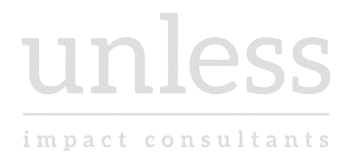Nonprofits are driven by a mission to improve the world rather than generate profit. Nonprofits are often viewed as the lesser corporate entity – incapable of being innovative or ambitious. OpenAI’s journey, beginning as a nonprofit and evolving into a hybrid model, demonstrates nonprofits can achieve groundbreaking success when given the right tools and opportunities.
Why Are Nonprofits Treated Differently?
There is a common misconception that nonprofits cannot innovate like for-profit companies. For-profits are praised for taking risks. They raise significant capital and pursue ambitious goals. On the other hand, nonprofits are typically constrained by limited budgets and very different expectations. Don’t spend money on anything except the people identified in your mission.
OpenAI’s story challenges this notion. It proves that with sufficient support and flexibility, nonprofits can achieve remarkable outcomes, such as advancing artificial intelligence (AI) to benefit humanity.
OpenAI’s Original Mission
OpenAI began as a nonprofit focused on making AI safe and beneficial for everyone. As their work progressed, they realized the scale of funding required far exceeded what they could raise through donations.
Instead of abandoning their mission, they devised a creative solution. Create a for-profit entity. Make it a benefits corporation. Give the nonprofit control of it. This allows them to raise billions of dollars while trying to stay true to their original goals.
Proof That Nonprofits Can Lead the Way
When OpenAI launched in 2015, it was a small research lab with a big dream. At first, it wasn’t worried about selling products or generating revenue. It was focused on ambitious projects like robotics and AI research. When it realized billions of dollars were required to succeed, it created a hybrid model instead of adhering to traditional nonprofit structures.
Granted, AI is a once-in-a-generation transformational technology, but it shows nonprofits are not inherently limited in their capacity to tackle big challenges. OpenAI’s example shows that nonprofits can compete and thrive in industries often dominated by for-profits, provided they are given the opportunity to prove themselves.
Ensuring Nonprofit Sustainability
Will this shift to a for-profit model lead to a focus on profits over purpose? Skeptics have raised concerns that the human benefit may be taking a backseat to shareholder interests. Choosing to become a public benefit corporation (PBC) offers some reassurances because it is required to operate in a responsible and sustainable manner.
It is also encouraging that OpenAI’s nonprofit control the for-profit and controlled by the non-profit, and profit sharing for investors and employees is capped. As the for-profit generates revenue, the nonprofit’s mission gets funded. This approach demonstrates that nonprofits can remain sustainable and even thrive when they embrace innovative strategies.
Lessons for the Nonprofit Sector
OpenAI’s journey offers valuable insights for other nonprofits:
- Nonprofits Can Innovate: The idea that nonprofits cannot lead in complex or high-tech fields is a myth. OpenAI’s success proves otherwise.
- Creative Funding Models Matter: Nonprofits should explore funding options beyond traditional donations, such as hybrid structures or mission-driven investments.
- Stay Mission-Focused: Even when adopting new models, nonprofits must prioritize their core mission and values.
A Challenge for the Future
OpenAI’s story raises an important question: what could other nonprofits achieve with similar resources and freedom to innovate? Imagine the possibilities if nonprofits tackling health care, climate change, or education had access to billions of dollars and the ability to take bold risks. How much more could they accomplish?
It is time to shift our perception of nonprofits. They are not just charities with passion projects. They are corporate entities that try to make as much money as possible – and then spend it to benefit society instead of shareholders.
OpenAI’s journey shows what is possible when we invest in nonprofits and empower them to succeed. By supporting nonprofits as we do startups, we can help them solve some of the world’s biggest problems and create a better future for all of us.

